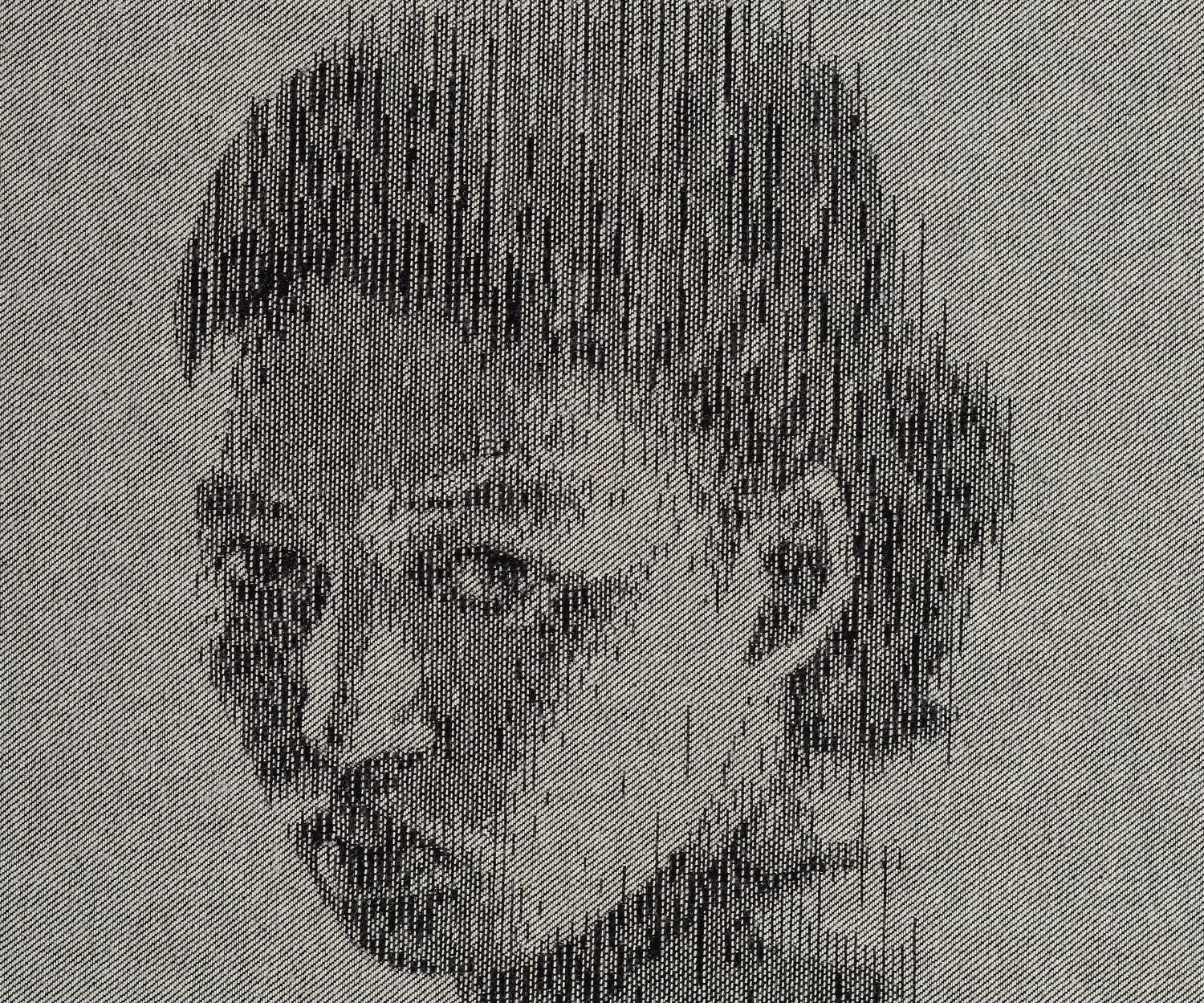Kumi Yamashita’s new solo exhibition at the Flinn Gallery curated by Leslee Asch showcases exquisite portraits, but hers are not traditional or easy interpretations of human subjects. There are the entrancing features that capture our attention. However, Yamashita is here to show us a larger picture, a way to connect the countenance with the collective, the parts to the whole. To do this, the artist employs unusual materials in her work, casting light to make shadowy forms from found objects or networking a single thread along hundreds of nail posts to make a facial matrix. In some ways, her art is as much about the final arrangements we see as the resources that make them.
0-9, one work on display from the artist’s “Light & Shadow series,” is made from a spartan scattering of white wooden numerals, creating a sense of sculptural relief. In no discernable order, machine-carved 8s, 3s, 1s, 2s and so on fill the wall in disarray. They look like a handful of dice rolled out by a gambler, exploding from right to left. Following that trajectory is a blast of light from a single source, which illuminates a lucky 7, then trips along all the other numerals until, unexpectedly, a distinct profile of a young boy emerges in a thick collection of shadows. The texture of his hair suggests he is, perhaps, Black. His long eyelashes and closed eyes give him a sense of solemnity and peace. It makes me think of the innocent silhouette self-portraits commonly assigned to create in elementary school art classes. Perhaps the numbers allude to the inroads towards learning a child might take, using the basic alphanumeric building blocks of knowledge to develop ideas—from math equations to personal identity—in their head. It is interesting that the jumbled block numbers manage to coalesce into the representation of a person, but only under the influence of light, that elusive unbound energy—both a wave and a particle—that engages with form, generating value in contrasts between the ineffable and the tangible.
SEE ALSO: How Richard Tuttle’s Paradoxical Constructed Canvases Question Objectuality
Another standout work in the show is Strings, a headshot portrait of a young Asian girl who directly engages the viewer with serene eye contact. This piece is a wonderwork of pointillism, crafted from the titular string, running tightly from one galvanized nail to another across the girl’s entire visage. The overlap of each colored thread creates a gridwork of faint skin tones and darker hair colors. The features of the young girl seem to slowly emerge from the higher points of the threads, which float above her face and intersect like the map of a communications network or a constellation of stars from a not-so-far-away galaxy. Although barely perceptible a few yards back, as I approach the piece, I see what are a few starting points along the perimeter of the frame and vertical lines of thread from each that lead into the face. While it is easy to gaze at and meditate upon the angelic beauty of the young girl, these traces make me aware of the work’s construction, its maker’s great effort and its connection to the continuum of other works in the room.

Further into the gallery, I see a 2013 work by Yamashita, this one made of workaday world black denim. Unlike the slow, intricate building of thread required to create Strings, Warp and Weft (Mother No. 2), this is a work in which threads have been systematically removed to create a portrait of the artist’s mother. Yamashita explains her process: “Sometimes, there is something beautiful about things falling apart. Undoing one thing while simultaneously creating another. Here, I’ve taken fabric and pulled out bits and pieces of the lighter color thread to create the image.” The almost pixelated effect of the remaining threads brings what otherwise seems like a nostalgic silver print portrait of the young mother into our current world of hi-def digital displays––but somehow tempered by the heavy cloth of common apparel. Warp and Weft (Mother No. 2) seems to be as much about inevitable entropy, as it is about the people who rise through the ashes of time and greatly influence our lives.
A pleasant and brief trek on the Metro-North Railroad to the small but mighty Flinn Gallery in picturesque Greenwich is always a welcome reprieve from the psychic shakedown of city living in New York. This unassuming contemporary exhibition space in the middle of the town’s neatly updated library has hosted numerous world-class contemporary shows over the last few years, and “The Elusive Art of Kumi Yamashita” is no exception. I recommend making a day of it. Catch this unique portrait exhibition, grab lunch, stay for a lingering look at the turning leaves and let your soul warm up as the weather cools down.
“The Elusive Art of Kumi Yamashita” is on view through November 6 at Finn Gallery in Greenwich, Connecticut.


